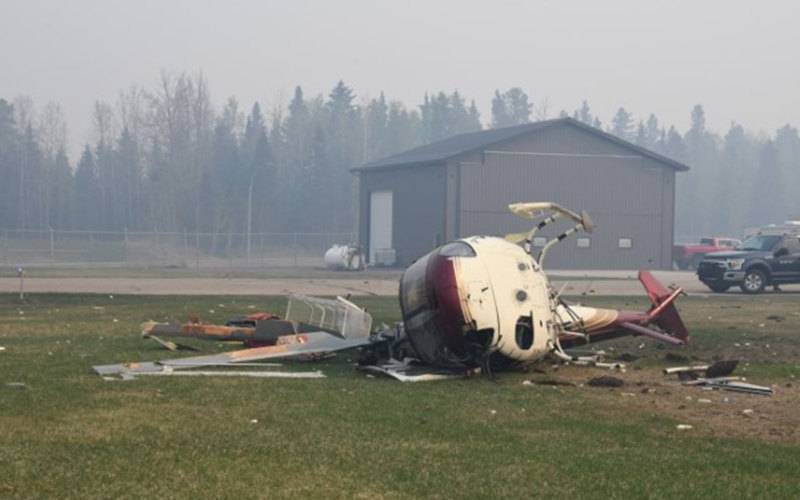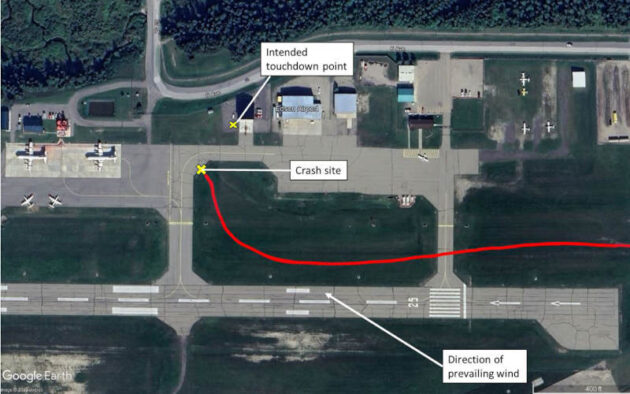
Features
Safety & Training
TSB reports on hard landing at Edson Airport
December 11, 2023 By Helicopters Staff
 Accident site looking north (Photo: TSB)
Accident site looking north (Photo: TSB) The Transportation Safety Board of Canada on November 29 released its class 4 investigation report (A23W0048) into the May 4, 2023, hard landing involving an Airbus Helicopters AS350 B2 registered to Range Helicopters at the Edson Airport, Alberta.
The occurrence helicopter was conducting a return flight to Edson Airport (CYET) from a forest firefighting staging area located approximately 49 nautical miles (NM) to the east. When the helicopter was 5 NM east of CYET, the Transportation Safety Board (TBS) explains a flight of four Canadair CL-215T aircraft was approaching the airport from the west and intending to land on Runway 07, which was active at the time.
It was reported that the wind was strong and gusting from the east-southeast. The occurrence pilot’s usual approach to the Range Helicopters hangar at CYET involved passing to the south of the town of Edson, explains TSB, and then approaching the airport from the west. Upon hearing the intentions of the flight of CL-215T aircraft, TSB explains the pilot, not wanting to delay the group’s arrival, decided to approach the airport downwind and to the north of Runway 07, between the runway and the taxiway, with the intent of conducting a tight right turn to align the helicopter into the wind.

Occurrence helicopter’s flight path to Edson Airport (Source: Google Earth, with TSB annotations)
As the helicopter approached between Runway 07 and the grassy area between taxiways A and B, TSB explains the pilot began to slow down, eventually reaching a groundspeed of 30 knots. The pilot noticed a pair of air tankers at the fire base ahead and to his right, explains TSB, and, not wanting to overfly them, he slowed down even more. The helicopter was in a descent at a rate between 300 and 500 fpm with a tailwind of 27 to 36 knots, according to the TSB report.
Just before entering the right turn toward the hangar, TSB explains the helicopter began an uncontrolled descent from between 50 and 30 feet above ground level (AGL). The pilot applied collective to reduce the rate of descent; however, the rate of descent increased. This scenario, explains TSB, is consistent with a vortex ring state (VRS). The aircraft struck the ground and rolled onto its right side. The pilot sustained minor injuries and there was no fire.
For the full report, visit TSB’s website.